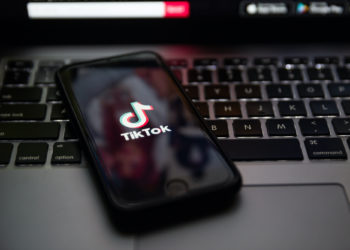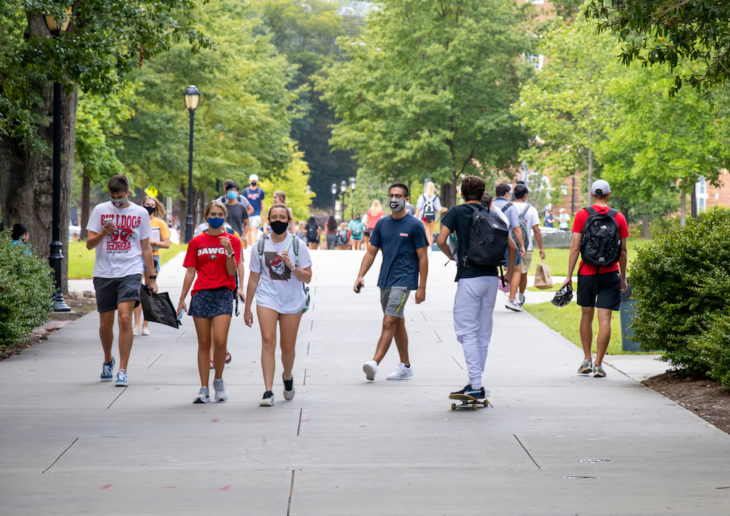
By Wyatt Otto, Content Manager With TikTok growing to become the most popular platform for traditional college students (age 18-22), more colleges are joining the platform to better connect to… Read More – So Your College is on TikTok, Now What?
Blog September 24, 2020

This fall semester, colleges and universities have had to address a lot of change within the higher education system. Many colleges have been faced with the challenge of deciding whether students should return to campus for in-person classes or remain purely virtual. These choices have led to further turmoil, with coronavirus cases rising on college campuses where students have returned and lack of motivation and virtual burnout amongst the online communities. Learn more about how colleges and universities across the nation are learning to cope with these changes and what they are doing to address these issues to prepare for an uncertain spring.
Many colleges and universities have faced the tough decision this fall on whether it is safe enough to open campuses to students in the midst of the coronavirus pandemic. Many of these schools have used the college experience as an advertising tactic to entice students to apply even though the college experience is relatively nonexistent due to the effects of the pandemic.
2. The Nuances of the Free College Debate
While the value of higher education is widely accepted, the idea of free college for students has caused a division between the Democratic and Republican Parties. While most of the Democratic Party believes that attendance should be free at two-year colleges, Republicans believe that it would be unfair for those who chose not to go to college to support these attendees
3. Political Influence on Fall Plans
While many factors have contributed to colleges’ decisions to open campuses, one of these factors might be which political party each state identifies with. Data from the College Crisis Initiative at Davidson College was recently able to predict the likelihood of a college choosing to stay online or return to in-person classes based on the political identity of the state.
4. Wanted: More Community College Faculty to Help Keep Students on Track
Community college faculty members are an integral part of the student journey. One of the biggest takeaways from the guided pathways model that is being implemented on hundreds of campuses is that faculty members play a key role in these initiatives, as they serve as a connection point between the student and the institution.
Community colleges are working hard to focus on ways to increase student engagement during the coronavirus pandemic. These colleges serve a diverse audience with ages ranging from high school to senior citizens, which can make building a community somewhat challenging. While the colleges might not have on-campus living to assist in building this community, they do take advantage of the smaller class sizes and faculty who are dedicated just to teaching.
6. Community Colleges Have Long Powered the Economy. To Sustain That Role, They Must Innovate.
The career technical industry and community colleges have been longtime partners. Now more than ever, career technical education programs are needed to prepare students for these high-paying and skill-demanding jobs.
7. Report Focuses on Improving the Mental Health of Students of Color
A recent report by The Steve Fund has made recommendations on how colleges and their employees can better serve students of color that are battling mental health issues during the coronavirus pandemic and social injustice. The crisis response task force encompasses 21 members that include students, mental health experts, higher education administrators, and more.
8. How Community Colleges Are Serving the Most Vulnerable
The Center for American Progress has reported that public colleges spend annually an average of $1,000 less per student of color than they do white students. Students of color are more likely to attend community colleges, which are extremely underfunded.
9. As Campuses Become COVID-19 Hot Spots, Colleges Strain Under Financial Pressures
The New York Times reports that currently there are more than 88,000 coronavirus cases at U.S. colleges and universities. The decision for some schools to offer in-person classes has largely been driven by the financial need of the colleges.
10. Marketing in the Age of Resistance
In the current political climate and the battle against racial injustice, many brands jump to responding out of fear or feel the pressure to say “the right things” versus being strategic in their messaging. Little do they know that inauthentic or false statements about diversity and equality can easily be exposed and ridiculed.

By Wyatt Otto, Content Manager With TikTok growing to become the most popular platform for traditional college students (age 18-22), more colleges are joining the platform to better connect to… Read More – So Your College is on TikTok, Now What?

We’re all familiar with she/her and he/him pronouns, but there’s a third set of pronouns that we need to become more familiar with, and that’s singular they/them pronouns.

In an interview with Paula Di Dio, Ph.D. in Latin American literature and cultural studies and senior director of communications & research strategist at Interact, we break down how best to communicate with Latino and Hispanic students.
Read More – Writing and Marketing to Latino and Hispanic Students